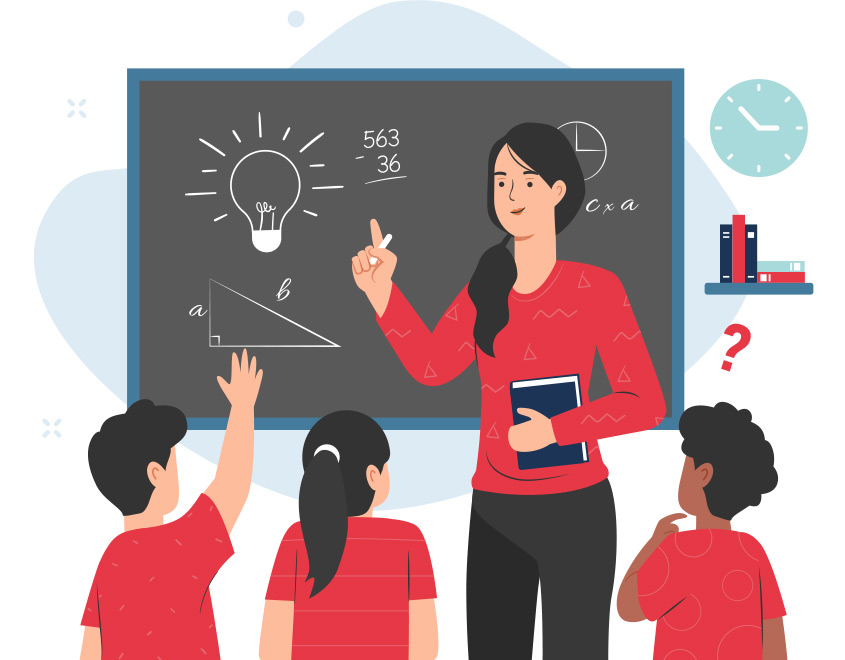Master Primary Science Concepts with Quality Tuition in Singapore
Master Primary Science Concepts with Quality Tuition in Singapore
Blog Article
A Comprehensive Guide to the Different Understanding Methods in Key Scientific Research Guideline
The exploration of varied learning approaches in primary scientific research direction presents a possibility for educators to improve pupil involvement and comprehension significantly. By analyzing hands-on understanding techniques, inquiry-based approaches, and collaborative strategies, we can determine efficient techniques that accommodate various discovering designs. Furthermore, the combination of innovation and separated guideline plays a vital function in cultivating a comprehensive environment. The question continues to be: how can these methods be successfully carried out in the class to optimize their impact? The response hinges on a closer evaluation of each technique and its ramifications for training scientific research.

Hands-On Knowing Methods
Hands-on discovering methods play a crucial function in primary science guideline, engaging pupils in energetic expedition and testing. These approaches permit learners to connect directly with sensations and products, promoting a deeper understanding of clinical principles. By utilizing manipulatives, designs, and real-life experiments, teachers produce a setting where pupils can observe, assume, and test their ideas.
Such methods not just improve comprehension however likewise cultivate important thinking and analytic abilities. When students join tasks like developing simple makers, planting seeds, or performing chemical reactions, they are urged to ask questions and look for solutions via their own monitorings. This experiential approach aids to demystify intricate clinical concepts, making them extra obtainable and relatable.
Moreover, hands-on understanding advertises partnership amongst peers, as pupils frequently work in groups to conduct experiments or share searchings for. This team effort not only enhances their knowing experience however additionally establishes important social abilities. Ultimately, integrating hands-on techniques in primary science direction promotes a long-lasting love of knowing and curiosity about the natural globe, laying a strong structure for future academic pursuits in science and beyond.
Inquiry-Based Discovering
Inquiry-based understanding is an instructional approach that encourages students to ask questions, examine phenomena, and create their very own understanding of scientific ideas. This technique moves the focus from conventional teacher-led instruction to a more student-centered experience, where students take the effort in their instructional journey. By cultivating curiosity, inquiry-based learning advertises much deeper involvement with the material, permitting pupils to discover subjects in a purposeful context.
In method, this approach often includes hands-on experiments, monitorings, and vital reasoning activities that align very closely with the clinical technique. Trainees are encouraged to formulate theories, style investigations, and analyze data, which cultivates vital skills such as logical and analytic reasoning. The function of the instructor in this framework is to assist in expedition, leading pupils with the questions process while motivating independent idea and partnership.
Furthermore, inquiry-based learning supports a sense of possession over the understanding process, motivating pupils to go after expertise proactively. This method not just enhances understanding of clinical principles yet likewise fosters a lifelong love for discovering, gearing up trainees with the skills necessary to navigate a significantly intricate world.
Collaborative Discovering Approaches
Collaborative understanding methods encourage pupils to participate in significant interactions with peers, fostering a common obligation for their academic results. In primary science instruction, these strategies urge learners to collaborate to discover clinical concepts, resolve troubles, and carry out experiments (primary science tuition Singapore). By taking part in team tasks, students can utilize diverse point of views, permitting for richer understanding and retention of clinical understanding
One key aspect of collaborative knowing is the focus on communication skills. Trainees must express their thoughts, listen actively to others, and negotiate concepts, every one of go to the website which are essential expertises in both real-world and academic contexts. This social interaction not only improves their understanding of clinical principles but additionally advertises team effort and conflict resolution skills.
Moreover, collaborative discovering often causes increased inspiration and involvement. When pupils see the value of their contributions within a group, they are extra most likely to take ownership of their learning trip. Educators can facilitate this process by designing organized group jobs that align with educational program goals while supplying guidance on efficient collaboration methods. In general, integrating collaborative discovering techniques in key science direction grows a vibrant discovering environment that prepares trainees for future academic and social difficulties.
Technology Combination in Science
The assimilation of innovation in primary scientific research instruction enhances learning experiences by supplying innovative tools and resources that sustain numerous teaching approaches, consisting of collaborative knowing - primary science tuition Singapore. The usage of electronic systems, simulations, and interactive applications allows pupils to engage deeply with clinical concepts, facilitating a much more hands-on technique to knowing
Online laboratories, for circumstances, allow students to carry out experiments safely and efficiently, advertising inquiry-based understanding. These tools can replicate real-world clinical situations, permitting pupils to envision intricate procedures that would be difficult to reproduce in a traditional classroom setting. Innovation promotes communication and collaboration amongst pupils, as they can share searchings for and work with each other on projects with on the internet my explanation systems.
Furthermore, multimedia presentations and educational video clips can enhance lessons by catering to diverse understanding designs, making abstract ideas extra obtainable. Information analysis tools also empower pupils to collect and translate clinical information, reinforcing vital thinking skills. Overall, the critical consolidation of modern technology in primary scientific research direction not just enhances involvement yet also prepares students for a technically advanced culture, equipping them with necessary abilities for future clinical endeavors.
Distinguished Direction Methods
Separated instruction methods are vital for attending to the varied requirements of students in main science education and learning. These methods enable instructors to customize their training techniques to fit differing capacities, rate of interests, and discovering styles within the class. By using differentiated guideline, instructors can develop an inclusive setting that promotes involvement and enhances understanding of clinical ideas.
One efficient technique is to make use of adaptable organizing, which permits students to team up with peers at comparable ability levels or with varying viewpoints. This approach encourages peer discovering and promotes vital thinking. In addition, offering choices in assignments can encourage trainees, allowing them to choose jobs that resonate with their rate of interests while still satisfying curricular purposes.
Furthermore, including tiered jobs is an additional valuable strategy. By designing jobs with varying levels of intricacy, educators can make sure that all pupils are properly tested, no matter their efficiency. Utilizing formative analyses to evaluate comprehending additional enables teachers to readjust their instructional methods dynamically, ensuring that each learner gets the support they require.
Inevitably, carrying out set apart direction approaches in key scientific research education not only improves student discovering results but also cultivates a passion for scientific research, preparing students for future academic quests.

Conclusion
In summary, effective key science guideline requires a multifaceted approach that encompasses hands-on knowing, inquiry-based methods, and joint methods. The integration of innovation and separated direction further caters to varied learning designs, fostering a setting helpful to exploration and crucial from this source reasoning.
The expedition of varied learning methods in primary scientific research guideline offers an opportunity for teachers to enhance trainee involvement and understanding dramatically.Hands-on understanding techniques play a crucial function in main science direction, involving students in energetic exploration and testing.Inquiry-based knowing is an instructional approach that encourages trainees to ask inquiries, examine sensations, and build their own understanding of scientific ideas.Collaborative learning techniques equip trainees to involve in meaningful communications with peers, fostering a shared responsibility for their educational results. In general, integrating collaborative discovering strategies in key science guideline cultivates a dynamic understanding environment that prepares trainees for future academic and social challenges.
Report this page